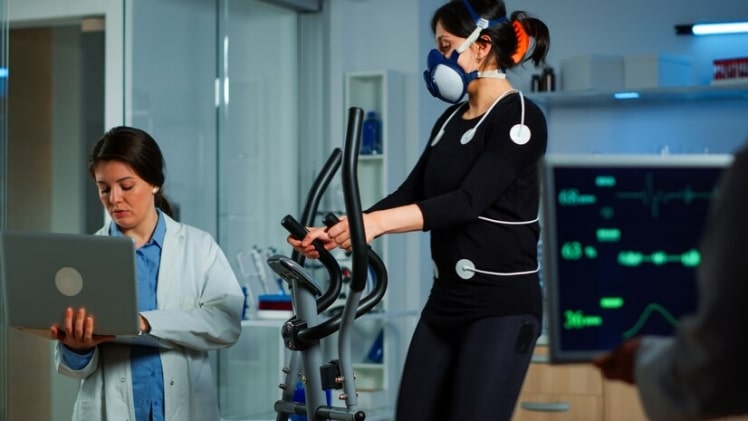In the realm of sports recovery, athletes are constantly seeking methods to enhance their performance and expedite recovery processes. One emerging trend that has gained significant attention is oxygen therapy. Oxygen therapy involves the administration of oxygen at higher concentrations than what is typically found in ambient air, to improve athletic recovery, reduce fatigue, and potentially enhancing performance. Studies highlight the positive effects of oxygen supplementation on recovery time and endurance levels post-exercise. These findings underscore the potential of oxygen therapy as a valuable tool in sports recovery protocols, offering athletes a scientifically backed method to optimize their performance and recovery outcomes.
This article delves into various oxygen therapy techniques used in sports recovery, exploring their mechanisms, benefits, and considerations.
Understanding Oxygen Therapy
Oxygen therapy involves administering oxygen at concentrations higher than those found in ambient air, with the primary objective of improving recovery, reducing fatigue, and potentially enhancing athletic performance. Several techniques are utilized in oxygen therapy, each offering distinct benefits and considerations.
1. Hyperbaric Oxygen Therapy (HBOT)
Hyperbaric Oxygen Therapy involves breathing pure oxygen in a pressurized chamber. The increased pressure allows for enhanced oxygen dissolution in the bloodstream, promoting accelerated delivery to tissues and organs.
Benefits of HBOT:
- Accelerated Recovery: HBOT can expedite recovery from muscle fatigue and tissue damage by optimizing oxygen availability.
- Anti-inflammatory Effects: It has shown potential in reducing inflammation, and aiding in recovery post-exercise.
- Performance Enhancement: Studies suggest HBOT may improve endurance and overall athletic performance by supporting recovery processes.
Considerations:
- Cost and Accessibility: HBOT chambers are costly and may not be widely available.
- Safety: Proper supervision is crucial to mitigate risks associated with increased pressure and oxygen exposure.
2. Normobaric Oxygen Therapy (NBOT)
Normobaric Oxygen Therapy involves breathing oxygen at normal atmospheric pressure but at higher concentrations than those naturally present in the air. This can be achieved through specialized masks or devices.
Benefits of NBOT:
- Convenience: Portable NBOT devices allow for use at home or during travel.
- Enhanced Recovery: Similar to HBOT, NBOT enhances oxygen delivery to tissues, aiding in recovery from intense physical exertion.
- Versatility: It can be used immediately post-exercise to facilitate recovery processes.
Considerations:
- Oxygen Concentration: Monitoring oxygen levels is crucial to avoid risks associated with high concentrations.
- Individual Response: Effectiveness may vary among athletes, necessitating personalized assessment.
3. Exercise with Oxygen Therapy (EWOT)
Exercise with Oxygen Therapy (EWOT) involves performing physical exercise while breathing supplemental oxygen through a mask or nasal cannula.
Benefits of EWOT:
- Improved Oxygen Utilization: Enhances oxygen uptake during exercise, potentially boosting endurance and performance.
- Cardiovascular Benefits: Stimulates cardiovascular adaptation, promoting efficient oxygen utilization.
- Recovery Support: Oxygen Therapy improves athletic performance by helping in faster recovery through maintaining optimal oxygenation levels during and after exercise sessions.
Considerations:
- Training Supervision: Proper supervision ensures safety and optimal oxygen delivery during exercise.
- Integration: Integrating EWOT into training routines requires careful planning and monitoring of oxygen levels.
4. Cryotherapy with Oxygen Enrichment
Cryotherapy with Oxygen Enrichment combines exposure to cold temperatures with breathing oxygen-enriched air.
Benefits:
- Synergistic Recovery: Reduces inflammation and promotes tissue repair through combined effects of cryotherapy and oxygen enrichment.
- Enhanced Performance: Supports endurance and performance by optimizing recovery between training sessions.
Considerations:
- Safety Measures: Adherence to safety protocols is essential to prevent cold-related injuries and ensure effective oxygen delivery.
Integrating Oxygen Therapy into Sports Recovery
Incorporating oxygen therapy into a comprehensive sports recovery regimen requires careful consideration of athlete-specific needs and training demands. Key strategies for effective integration include:
- Consultation: Seek guidance from sports medicine professionals to determine the most suitable oxygen therapy technique.
- Monitoring: Regular assessment of oxygen levels and physiological responses ensures safety and effectiveness.
- Consistency: Maintain a consistent regimen to maximize benefits over time.
- Safety First: Adhere to safety guidelines for each oxygen therapy technique to minimize risks.
Conclusion
Oxygen therapy techniques offer promising avenues for enhancing sports recovery and optimizing athletic performance. From hyperbaric and normobaric oxygen therapies to exercise with oxygen therapy (EWOT) and cryotherapy with oxygen enrichment, each method provides unique benefits that can be tailored to meet athlete-specific goals. By understanding the mechanisms and applications of these techniques, athletes and sports professionals can leverage oxygen therapy as a valuable tool in their pursuit of peak performance and optimal recovery.
As research continues to evolve, the integration of oxygen therapy into sports recovery protocols holds significant potential for advancing performance-enhancement strategies. By staying informed and implementing evidence-based practices, athletes can elevate their training efficiency and competitive edge effectively.


